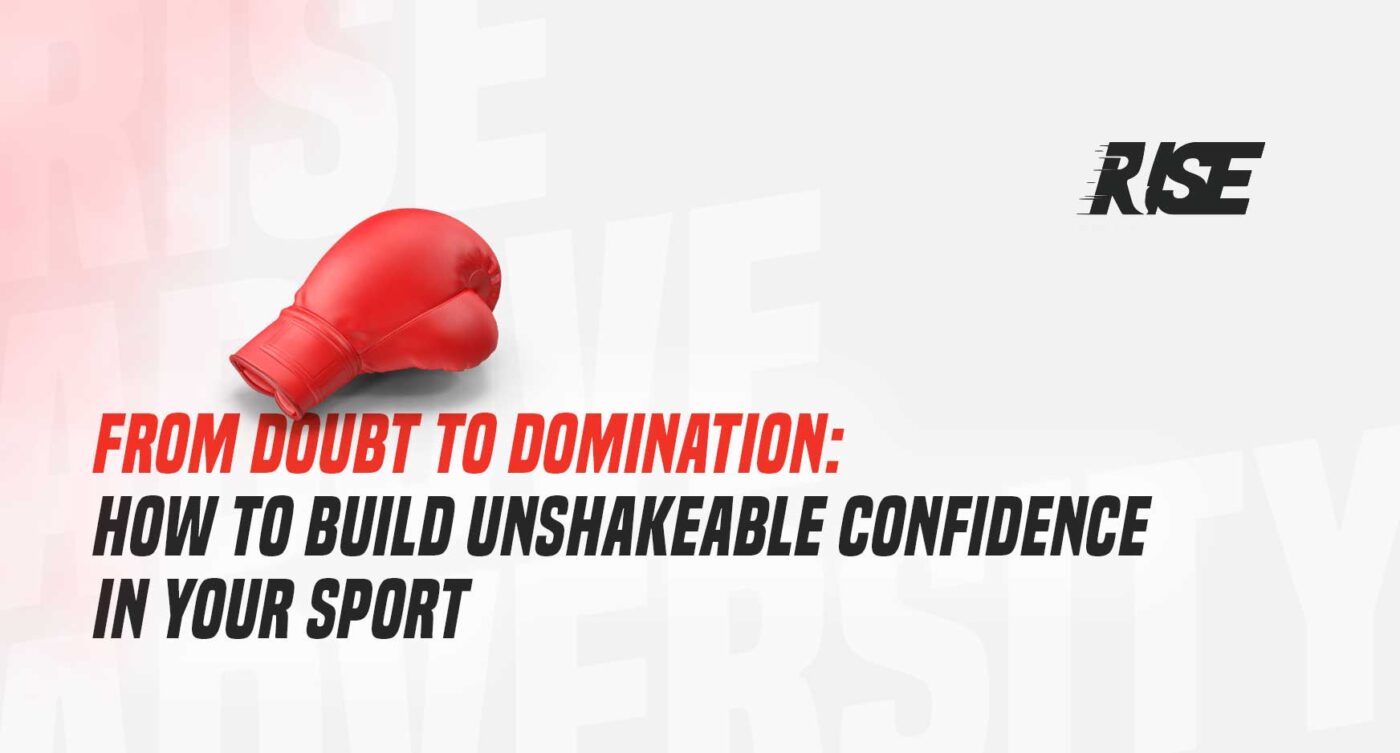The number one conclusion that any athlete or parent of an athlete comes to from performance inconsistency is “confidence.” Like many aspects of the mental game, confidence is an intangible element that although it cannot be measured, we know and we can see athletes who perform with high confidence as well as those who are affected by low levels of confidence in their skill set.
Most of the time, especially if the athlete has a high work ethic and is regularly practicing and developing their skillset, the issue has less to do with confidence and more to do with what’s affecting their confidence – i.e. what they are focusing on in competition. But let’s save the element of focus for another blog. Today I want to talk about how confidence is authentically developed into our system as an athlete.
Let’s start way back to when you were a baby. In fact, you may not realize it but you’ve been learning and mastering skills since the day you came out of the womb. From learning how to walk to brushing your teeth, to making your breakfast. These are all skills that you’ve mastered along your journey of life, and an elite sports skillset is no different.
Every skill is developed through muscle memory. Muscle memory is a type of procedural memory that allows athletes to perform complex movements without conscious thought. When an athlete repeatedly performs a specific movement, such as a tennis serve or a basketball jump shot, the brain creates neural pathways that become more efficient with practice.
These pathways allow the athlete to execute the movement more quickly and accurately, and with less conscious effort. Over time, the movement becomes automatic and the athlete can perform it without thinking about it. This is why athletes can perform complex movements with ease, even under pressure or in high-stress situations. However, it’s important to note that muscle memory is not actually stored in the muscles themselves, but rather in the brain.
Confidence is a crucial aspect of an athlete’s performance, and it is authentically developed through practice and repetition in the following manner.
Every skill is developed through 4 stages of learning – As I mentioned above, one of the first things you ever learned as a baby was how to walk, so let’s use that skill as an example.
Stage 1- Unconscious Incompetence:
Unconscious = Unaware. Incompetence = No good at it.
At this stage, you don’t know what you don’t know. You’ve never had to get up on your two legs before and the way you’ve moved around the house up until this point is on all fours. Even though people are walking around you every day, you are not aware that you don’t know how to walk.
Stage 2 – Conscious Incompetence:
Conscious = Aware. Incompetence = No good at it.
At this stage, you now know that you don’t know how to walk. You learn that walking is much more efficient than crawling and so you begin the development of learning how to walk. Sometimes at this level, there can be an illogical confidence. You may think this is easier than it looks and can be an incredibly frustrating part of the process as there is generally a lot more setback than success. But through every setback or success, you practice and repeat, practice and repeat. By doing this, you start to build strength in your legs and you can stand up for a longer period of time as muscle memory develops.
Stage 3 – Conscious Competence:
Conscious = Aware. Competence = You can do it.
As you practice your new skill and develop the muscle memory around this. You are now starting to see some success in your ability to walk. You have to consciously think about each step you take, but as you do, you progress further and further without falling down. You’ve developed this new skill and become competent at it, but it still requires conscious effort. You’re so close to mastering this skill. Don’t give up now!
Stage 4 – Unconscious Competence:
Unconscious = You don’t have to think about it. Competence = You can do it.
This is the autopilot stage where most of your skills (that you’ve learned to date) are at this level. The skill of walking is now something that you don’t even have to become aware of anymore and is second nature to you. Most of you are required to run in your spots and you’ve even taken that to an unconscious competent level.
“Work until your brain forgets and your body remembers” – Unknown
If you want more confidence, outwork others and develop your skillset to the autopilot stage and then trust that the potential that you can reach in competition is higher than other competitors.
Putting in the work but still not getting the results you’d hoped for in competition?
I got you. There is another important aspect of confidence I want you to know. Confidence is a verb… An action… A doing word. We have to make this mindset shift and think of confidence not just as something you feel, not just as something you are, but as something you do.
Confidence takes action and acting confident isn’t just in your thoughts; it’s also in how you carry yourself. How you carry yourself affects how you feel and how others perceive you. If you want to be the athlete to beat, carry yourself like you are the athlete to beat.
This is different than being cocky or arrogant because it uses physiology to positively affect our psychology. This is allowing your body to send the message to your brain that you can do this. When you hold yourself with confidence, you start to feel more confident.
“It’s easier to act your way into a new way of thinking, than think your way into a new way of acting.” – Jerry Sternin
Here are 7 high-confidence traits that can have you performing with the utmost confidence in competition:
- Maintain a confident posture:
Stand tall from the moment you walk into the arena. Confident athletes have their shoulders back and their heads held high. To put this into perspective let’s look at it from the other side. Athletes experiencing lower confidence levels in competition tend to drop their heads and shoulders more weighing heavily on their body and affecting their ability to impulsively move at an elite level.
- Make eye contact:
Look directly at your coach, teammates, or opponents when speaking to them. Firstly, eye contact shows that you are engaged and present in the moment – a massive key to performing at your best. Secondly, when you make eye contact with someone you are establishing an authentic connection you are showing that you are more confident and capable. Conversely, looking away from someone can create an unconscious level of self-doubt and insecurity.
- Use positive body language:
Smile, nod, and use open gestures or an open body posture to show that you are fully engaged and confident. Your physiology directly affects your psychology. So, if you are using positive body language, not only are you thinking positively and creating a positive mindset, but you are signaling to your brain that you are confident and capable. This can give you a boost of self-esteem and assurance in your abilities as an athlete. This can also impact how others perceive you. When you present yourself confidently, others are more likely to see you as a strong and competent athlete.
“Optimism is the faith that leads to achievement. Nothing can be done without hope and confidence” – Helen Keller
- Speak clearly and confidently:
Use a strong, clear voice when communicating with others. When you speak positively and with conviction you reinforce positive thoughts and behaviours. Not only do you build stronger relationships and avoid misunderstandings but you feel more powerful, more capable, and more in control. Speaking clearly and confidently can help you not only become a more effective communicator but can increase self-awareness and have you feeling mentally prepared for competition.
- Dress the part:
When you look good. You feel good. And most athletes perform at their best when they feel good about themselves. When you look good you personify a more positive self-image. Think about what a confident “you” look like in competition and align yourself with your ideal self-image. This can have a positive impact on your emotional and psychological well-being by boosting your self-esteem, improving your mood, and giving you a greater sense of confidence and control.
- Practice, practice, practice:
The more you practice, the more confident you will feel in your abilities. If we take the mind out of it and everyone reached their skill potential based on the amount of practice and repetition they put into their skill set. Those who put more time, effort, and repetition in would outperform everyone else. Your best performances come from when you competed instinctually, relied on muscle memory, and trusted your skillset. Confidence is exactly that --> TRUST.
- Visualize success:
Imagining yourself performing well and achieving your goals can help boost your confidence for competition. By creating vivid and realistic mental images of yourself performing successfully, you create a sense of control. The mind can’t determine the difference between reality and what is imagined, and since we feel more confident in situations that we’ve been in before, we can create the same confidence through the mind’s eye.
“I am a big believer in visualization. I run through my races mentally so that I feel even more prepared.” – Allyson Felix
Confidence is a skill, and just like any skill, you get better with practice. So practice. Practice regularly. And the next time you step into competition… DO Confidence to FEEL Confident.
– 𝒞ℴ𝒶𝒸𝒽 𝒞𝒶𝓁.

